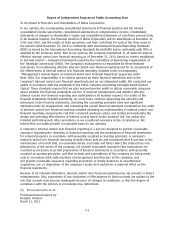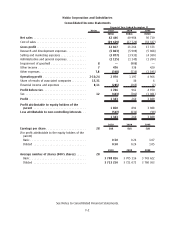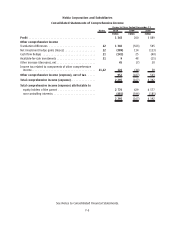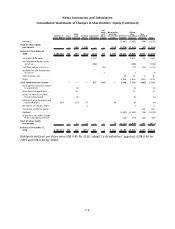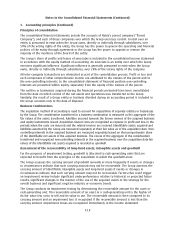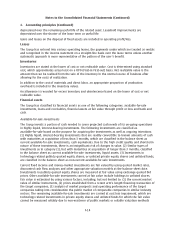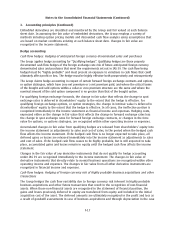Nokia 2010 Annual Report Download - page 197
Download and view the complete annual report
Please find page 197 of the 2010 Nokia annual report below. You can navigate through the pages in the report by either clicking on the pages listed below, or by using the keyword search tool below to find specific information within the annual report.Notes to the Consolidated Financial Statements
1. Accounting principles
Basis of presentation
The consolidated financial statements of Nokia Corporation (“Nokia” or “the Group”), a Finnish public
limited liability company with domicile in Helsinki, in the Republic of Finland, are prepared in
accordance with International Financial Reporting Standards as issued by the International Accounting
Standards Board (“IASB”) and in conformity with IFRS as adopted by the European Union (“IFRS”). The
consolidated financial statements are presented in millions of euros (“EURm”), except as noted, and
are prepared under the historical cost convention, except as disclosed in the accounting policies
below. The notes to the consolidated financial statements also conform to Finnish Accounting
legislation. On March 11, 2011, Nokia’s Board of Directors authorized the financial statements for
2010 for issuance and filing.
The Group completed the acquisition of all of the outstanding equity of NAVTEQ on July 10, 2008. The
NAVTEQ business combination has had a material impact on the consolidated financial statements and
associated notes. See Note 9.
Adoption of pronouncements under IFRS
In the current year, the Group has adopted all of the new and revised standards, amendments and
interpretations to existing standards issued by the IASB that are relevant to its operations and
effective for accounting periods commencing on or after January 1, 2010.
• IFRS 3 (revised) Business Combinations replaces IFRS 3 (as issued in 2004). The main changes
brought by IFRS 3 (revised) include clarification of the definition of a business, immediate
recognition of all acquisitionrelated costs in profit or loss, recognition of subsequent changes
in the fair value of contingent consideration in accordance with other IFRSs and measurement
of goodwill arising from step acquisitions at the acquisition date.
• IAS 27 (revised), “Consolidated and Separate Financial Statements” clarifies presentation of
changes in parentsubsidiary ownership. Changes in a parent’s ownership interest in a
subsidiary that do not result in the loss of control must be accounted for exclusively within
equity. If a parent loses control of a subsidiary, it shall derecognize the consolidated assets and
liabilities, and any investment retained in the former subsidiary shall be recognized at fair
value at the date when control is lost. Any differences resulting from this shall be recognized
in profit or loss. When losses attributed to the noncontrolling interests exceed the non
controlling shareholder’s interest in the subsidiary’s equity, these losses shall be allocated to
the noncontrolling interests even if this results in a deficit balance.
• Amendments to IFRS 2 and IFRIC 11 clarify that an entity that receives goods or services in a
sharebased payment arrangement should account for those goods or services regardless of
which entity in the group settles the transaction, and regardless of whether the transaction is
settled in shares or cash.
• Amendments to IFRIC 14 and IAS 19 address the circumstances when an entity is subject to
minimum funding requirements and makes an early payment of contributions to cover those
requirements. The amendment permits such an entity to treat the benefit of such an early
payment as an asset.
• In addition, a number of other amendments that form part of the IASB’s annual improvement
project were adopted by the Group.
The adoption of each of the above mentioned standards did not have a material impact to the
consolidated financial statements.
F9




